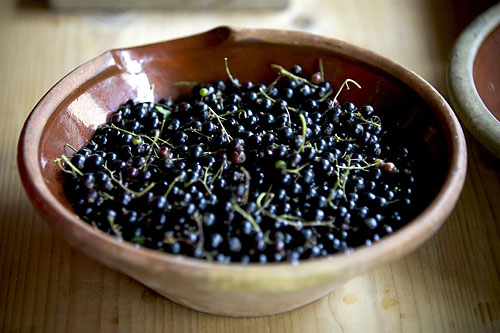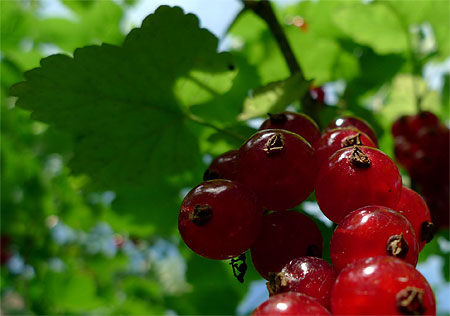– Rheumatic (chronic degenerative rheumatism and combat the effects of inflammatory rheumatoid arthritis and gout);
– Digestive problems (hepatobiliary diseases, hepatitis, impaired hepatic steatosis, jaundice, dyspepsia, gastritis, gastroduodenitis, duodenal ulcers, colitis, diarrhea and dysentery , intestinal parasites, facilitates digestion, stimulates liver function, pancreas and spleen , stimulates appetite);
– Nervous system disorders (stress, migraines, physical and intellectual exhaustion, mental fatigue post-influenza, general fatigue).
Favors bone growth in children
Benefic effects are found in other diseases such as diabetic retinopathy, increased visual acuity in pilots, drivers, divers and underground workers. It also increases resistance to infection appeared in the mouth and neck (tonsillitis, gingivitis, bleeding gums and inflammation), shootes acute pain and other infectious diseases such as measles and scarlet fever. In addition, it combats scurvy, the deficiency of vitamin C, promotes bone growth in children and increase red blood cell formation in children and in recovering anemic patients.
In external use, black currant fruit preparation is found efficient in abscesses, dermatitis, eczema, strikes, ringworm, insect bites, with anti-inflammatory effects and systemic corticosteroid hormones like skin allergies.
The leaves have special effects in arthritis, gout, dropsy, bladder catarrh, hypertension, coronary atherosclerosis, whooping cough, persistent headaches, stomach pain and the pain caused by the bites of bees and other insects.
Currant buds are effective in the treatment of many diseases, which are used along with fruits and leaves.
For internal use, buds act in stimulating anti-inflammatory hormones in prostate and prostate adenoma in uterine fibroids, ovarian cysts and other local inflammatory problems, mucosal lung, kidney and digestive.
In external use, buds preparations proved useful in dermatitis, urticaria and eczema.
Red currant
Red currant (Ribes rubrum) is a shrub-bush like black currant, distinguished by the color of the fruit, most commonly red, pink or yellow. Chemical content is almost identical to that of black currant fruit, with only a somewhat higher acidity, hereby organic citric, tartaric and malic acids.
Medicinal uses
Red currant fruit, like those of black currant, are used fresh, frozen or processed in various forms such as juice, syrup, sauce, marmalade, jam, jelly, wine, liquor, etc..
Fresh fruits can be consumed with a little sugar or honey. For detoxification eat one day a week one kg of fruits, without eating anything that day. This course of treatment will prevent stroke, hypertension, increases visual acuity, combat obesity and promotes longevity. Taken before meals, fresh fruit appetizers have tonic effects, and after meals it has stomachic actions.
Usually, currant fruits can be eaten in quantity of 125 grams daily, with yogurt or sour milk (200 ml), and sweetened with honey or sugar. Sprinkled with cereal flakes or breaded with crackers. Sometimes, it is recommended to add a little cinnamon, vanilla and lemon peel. Consumption of fruit is preferable in the morning on an empty stomach, but can be also taken for several occasions during the day. There is a preference to use currant fruit flavor in dairy products, fruit salad in the preparation of some medicines and soothing tea for heart and stomach disease.
Natural currant juice, pure or diluted with water, can be taken daily (200-500 ml), 3-4 fractionation, with beneficial effects against digestive inflammation and fever. 400 grams of fruit juice made from large leaves, has detoxifying, diuretic, antirheumatic and antigout properties.
Gargle made several times a day is recommended for the treatment of inflamed tonsils and in sore throat.
Currant cream obtained by maceration, has the effect of stimulating appetite.
Decoction: (one teaspoon of dried fruit with 250 ml of hot water) boil water, add the fruits and leave to infuse for 30 minutes, strain and drink the resulting quantity in the day, divided into 3-4 rounds.
Decoction of leaves has good effects on rheumatism
Infusion of leaves (10 grams per liter of hot water) can be consumed daily, in the morning and at bedtime, for arterial and venous diseases, urinary infections, rheumatic pain, colic nephritis, uterine fibroid with painful menstrual periods, and as a diuretic.
Decoction of fresh or dried leaves (30 grams of leaves per one liter of boiled water, infusion for 10 minutes and drink 3-4 cups per day) have remarkable effects in the treatment of rheumatism and arthrosis.
Currant seed oil has the ability to act in stimulating memory, having a high alpha-linolenic acid content, which is essential in the development and function of neurons.


